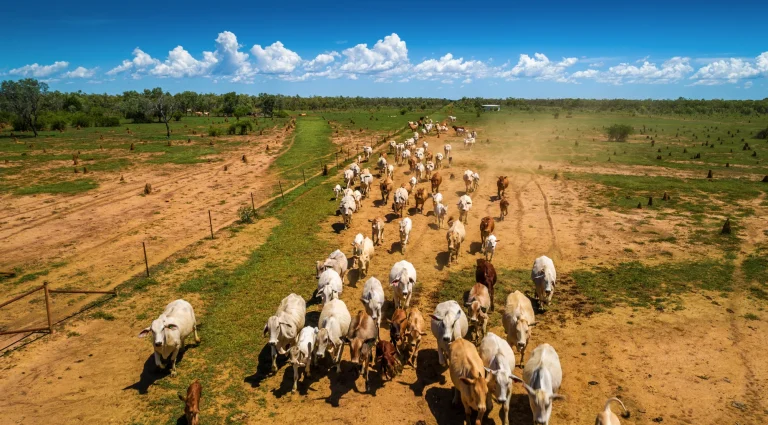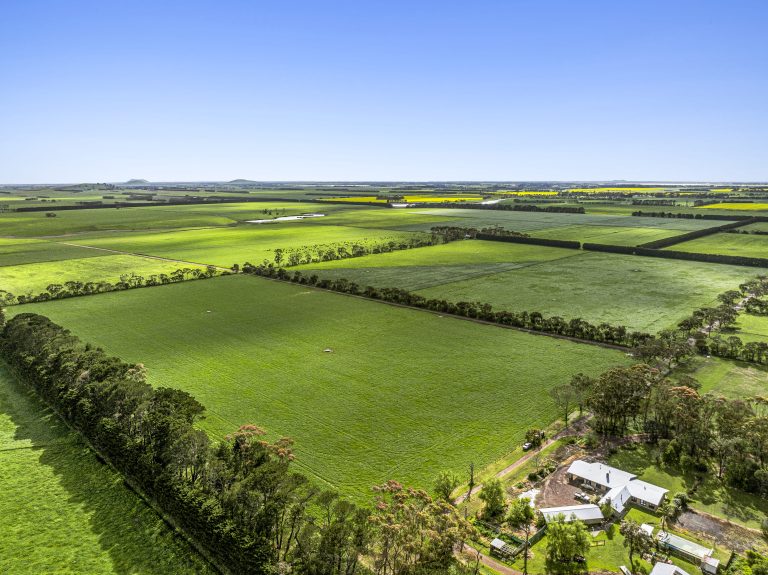Strategic Approaches to Acquiring Livestock Properties: Investment Guide
Livestock properties represent substantial agricultural investments that require sophisticated acquisition strategies encompassing market analysis, operational assessment, and long-term planning considerations. Developing strategic approaches to acquiring livestock properties involves understanding regional market dynamics, evaluating production systems, and assessing infrastructure requirements that determine operational success and investment returns. At Agribusiness Horizons, we guide clients through complex livestock property acquisitions using comprehensive market intelligence, detailed property analysis, and strategic planning expertise that ensures informed investment decisions. This guide explores the essential components of successful livestock property acquisition strategies that maximize investment potential while managing operational and financial risks effectively.
The livestock sector encompasses diverse property types from extensive cattle stations to intensive sheep operations, each requiring specialized knowledge of production systems, market conditions, and management requirements. Understanding these variations helps investors develop targeted acquisition strategies that align with their investment objectives and operational capabilities.
Understanding Livestock Property Market Dynamics
The livestock property market operates within complex economic cycles influenced by commodity prices, seasonal conditions, and global demand patterns that affect both property values and operational profitability. Cattle property markets typically demonstrate strong correlation with beef price cycles, while sheep property values reflect wool and lamb market conditions that create distinct investment timing considerations.
Regional market variations significantly impact livestock property values, with proximity to processing facilities, transport infrastructure, and feed supplies influencing operational efficiency and investment returns. Premium locations near major livestock markets command higher prices but often provide superior operational advantages and resale potential.
Buyer demographics include established pastoral companies seeking expansion opportunities, institutional investors targeting agricultural assets, and family farming operations pursuing generational growth strategies. Each buyer category evaluates properties using different criteria, creating diverse market segments with varying price expectations and transaction requirements.
Market seasonality affects both property availability and buyer activity, with peak transaction periods typically occurring after seasonal sales when financial performance becomes clear and operational planning for the following year begins. Understanding these patterns helps optimize acquisition timing and negotiation strategies.
Property Evaluation and Due Diligence Framework
Strategic approaches to acquiring livestock properties require comprehensive evaluation frameworks that assess production potential, infrastructure condition, and operational risks across multiple dimensions. Land quality assessment encompasses soil types, pasture conditions, and carrying capacity analysis that determines stocking rates and production potential under various management scenarios.
Water resource evaluation becomes critical for livestock operations, covering bore capacity, dam storage, and reticulation systems that support stock requirements throughout seasonal variations. Water security analysis includes drought resilience planning and alternative water source availability that affects operational sustainability during adverse conditions.
Infrastructure assessment covers livestock handling facilities, fencing systems, accommodation facilities, and machinery requirements that influence operational efficiency and capital investment needs. Modern livestock properties require sophisticated handling systems that meet animal welfare standards while optimizing labor efficiency and operational safety.
Financial performance analysis involves examining historical production records, cost structures, and profitability trends that provide insights into operational efficiency and investment potential. Understanding existing cost bases helps identify optimization opportunities and realistic return projections for acquisition planning.
Climate risk assessment evaluates long-term weather patterns, drought frequency, and seasonal variability that affect pasture production, feed requirements, and operational planning. Climate resilience planning becomes increasingly important for long-term investment success in variable Australian conditions.
Regional Specialization and Property Selection
Different regions offer distinct advantages for livestock operations based on climate patterns, soil types, and market access that influence acquisition strategies and investment returns. Northern cattle country provides extensive grazing opportunities with favorable breeding conditions but requires different management approaches and infrastructure compared to southern regions.
High-rainfall regions support intensive livestock operations with higher stocking rates and improved pasture production but often command premium property prices that require careful financial analysis. These properties typically offer more predictable production patterns but may face different cost structures and operational requirements.
Drought-prone regions may offer attractive acquisition opportunities during difficult seasons when motivated sellers create competitive pricing conditions. However, these acquisitions require sophisticated risk management strategies and adequate working capital to manage seasonal variability effectively.
Mixed farming regions enable livestock enterprises to integrate with cropping operations, providing diversification benefits and feed security that enhance operational resilience. These properties often require broader agricultural knowledge and more complex management systems but may offer superior risk-adjusted returns.
Transport accessibility significantly influences livestock property values through its impact on marketing costs, feed delivery expenses, and operational efficiency. Properties with superior transport access typically command premium prices but often provide operational advantages that justify higher acquisition costs.
Financial Structuring and Investment Planning
Successful livestock property acquisitions require sophisticated financial structuring that optimizes capital efficiency while managing cash flow requirements and operational risks. Understanding seasonal cash flow patterns helps structure financing arrangements that align with operational income cycles and working capital needs.
Acquisition financing options include traditional agricultural loans, vendor finance arrangements, and equity partnerships that offer different risk-return profiles and operational control considerations. Each financing structure affects acquisition capacity, ongoing financial obligations, and exit strategy flexibility.
Working capital requirements vary significantly between livestock operations based on stocking strategies, supplementary feeding programs, and operational intensity. Adequate working capital planning ensures properties can operate effectively through seasonal variations and market cycles without compromising production potential.
Tax planning considerations include depreciation opportunities, capital gains implications, and potential rollover provisions that affect acquisition structuring and long-term investment returns. Professional tax advice helps optimize acquisition structures while maintaining compliance with revenue authority requirements.
Risk management strategies encompass insurance coverage, diversification planning, and contingency fund establishment that protect investment values during adverse conditions. Comprehensive risk management becomes essential for maintaining financial stability and operational continuity.
Operational Efficiency and Management Systems
Modern livestock operations require sophisticated management systems that optimize production efficiency while maintaining animal welfare standards and environmental compliance. Strategic approaches to acquiring livestock properties must evaluate existing management systems and identify improvement opportunities that enhance operational performance.
Genetic improvement programs significantly influence long-term productivity and profitability of livestock operations through improved reproduction rates, growth performance, and product quality. Properties with established breeding programs and superior genetic bases often command premium prices but provide competitive advantages in production efficiency.
Pasture management systems including spelling strategies, fertilizer programs, and species selection affect carrying capacity and feed quality that determine stocking rates and supplementary feeding requirements. Well-managed pasture systems reduce operational costs while improving animal performance and environmental outcomes.
Labor management considerations include accommodation facilities, skill requirements, and management succession planning that affect operational continuity and cost structures. Properties with established management teams and adequate facilities often provide smoother transition opportunities but may require premium acquisition pricing.
Technology integration opportunities include livestock monitoring systems, pasture measurement tools, and data management platforms that enhance decision-making capabilities and operational efficiency. Properties with established technology infrastructure may offer competitive advantages but require ongoing investment and technical expertise.
Market Access and Value Chain Integration
| Property Type | Market Access Considerations | Value Chain Opportunities | Investment Implications |
|---|---|---|---|
| Breeding Operations | Genetic market access, registration systems | Stud services, genetic sales | Higher margins, specialized knowledge required |
| Commercial Cattle | Processing facility proximity, transport access | Direct marketing, feedlot integration | Volume-dependent returns, market exposure |
| Sheep Operations | Wool marketing channels, meat processors | Value-added processing, direct sales | Diverse revenue streams, market complexity |
| Mixed Enterprises | Multiple market channels, flexibility | Integrated operations, risk spreading | Enhanced stability, management complexity |
Understanding market access opportunities and value chain integration potential significantly influences livestock property acquisition strategies and long-term investment returns. Properties with established market relationships and premium product positioning often provide superior profitability and operational stability.
Agribusiness Horizons’ Livestock Property Acquisition Expertise
At Agribusiness Horizons, our strategic approaches to acquiring livestock properties combine deep agricultural knowledge with comprehensive market intelligence and financial analysis expertise that ensures clients make informed investment decisions. We understand that livestock properties represent complex agricultural enterprises requiring detailed evaluation of production systems, market conditions, and operational requirements.
Our property evaluation methodology encompasses comprehensive land assessment, infrastructure analysis, and financial performance modeling that identifies acquisition opportunities aligned with client investment objectives. We coordinate professional services including soil testing, water resource evaluation, and operational assessments that provide complete property analysis.
Our market intelligence services provide clients with current pricing information, transaction comparisons, and market trend analysis that supports strategic acquisition timing and negotiation strategies. We maintain extensive databases of livestock property transactions and market performance indicators that inform investment decision-making.
Our transaction management services coordinate all aspects of the acquisition process including property inspections, due diligence coordination, negotiation support, and settlement management. We work closely with legal professionals, financial advisors, and technical specialists to ensure smooth transaction completion while protecting buyer interests throughout the process.
Technology and Innovation in Livestock Operations
Contemporary livestock operations increasingly incorporate advanced technologies that enhance production efficiency, animal welfare, and environmental stewardship while providing competitive advantages for forward-thinking operators. Precision livestock management systems enable real-time monitoring of animal health, reproduction status, and performance indicators that optimize management decisions.
Automated feeding systems and water management technologies reduce labor requirements while improving feed efficiency and animal performance consistency. These systems require substantial capital investment but often provide operational advantages that justify acquisition premiums for well-equipped properties.
Data management platforms integrate information from multiple sources including weather monitoring, pasture assessment, and livestock performance tracking that support evidence-based management decisions. Properties with established data systems provide buyers with valuable operational insights and decision-support capabilities.
Genetic technologies including artificial insemination programs, embryo transfer capabilities, and genomic testing facilities enhance breeding program effectiveness and genetic improvement rates. Properties with advanced genetic capabilities often command premium prices but provide competitive advantages in production efficiency and product quality.
Environmental Stewardship and Sustainability Considerations
Environmental stewardship requirements increasingly influence livestock property operations through regulatory compliance obligations and market expectations that affect operational costs and revenue opportunities. Strategic approaches to acquiring livestock properties must evaluate environmental compliance status and sustainability improvement potential.
Carbon sequestration opportunities through improved pasture management, tree planting programs, and soil carbon enhancement provide additional revenue streams while supporting environmental objectives. Properties with carbon credit potential offer diversification benefits and alignment with sustainability market trends.
Biodiversity conservation programs including habitat protection, species management, and ecosystem restoration activities may provide funding opportunities while enhancing property values and operational sustainability. Understanding conservation opportunities helps identify value-added potential and risk mitigation strategies.
Water quality management including erosion control, riparian zone protection, and nutrient management affects environmental compliance and operational sustainability. Properties with established environmental management systems typically face lower regulatory risks and may qualify for government support programs.
Sustainable grazing management practices including rotational grazing systems, stocking rate optimization, and pasture species selection enhance long-term productivity while reducing environmental impact. These practices often require initial investment but provide operational benefits and regulatory compliance advantages.
Risk Management and Investment Protection
Comprehensive risk management strategies protect livestock property investments against operational, financial, and market risks that could impact investment returns and operational sustainability. Weather risk management includes drought preparedness, flood protection, and seasonal planning that maintain operational continuity during adverse conditions.
Market risk management encompasses price hedging strategies, diversification planning, and contract marketing arrangements that provide revenue stability and protect against commodity price volatility. Understanding risk management options helps optimize operational planning and financial performance.
Biosecurity risk management covers disease prevention protocols, quarantine facilities, and livestock health monitoring systems that protect animal health and market access. Effective biosecurity planning prevents disease outbreaks that could devastate livestock operations and impact investment values.
Operational risk management includes succession planning, staff training programs, and equipment maintenance schedules that ensure operational continuity and performance consistency. Professional management systems reduce operational risks while protecting investment values.
Insurance coverage including livestock mortality, property damage, and business interruption policies provides financial protection against unexpected losses that could impact operational cash flow and investment returns. Comprehensive insurance planning forms an essential component of risk management strategies.
Strategic Partnership and Joint Venture Opportunities
Strategic partnerships and joint venture arrangements provide alternative approaches to livestock property acquisition that reduce capital requirements while accessing specialized expertise and operational synergies. Management partnerships enable investors to acquire properties while leveraging experienced operators for day-to-day management and operational decision-making.
Equity partnerships distribute acquisition costs and operational risks among multiple parties while providing access to larger investment opportunities and enhanced expertise. These arrangements require careful structuring to align interests and establish clear governance frameworks.
Supply chain partnerships with processors, feedlots, or marketing organizations provide operational advantages and revenue security that enhance investment returns and reduce market risks. Established partnership arrangements often transfer with property acquisitions and provide competitive advantages.
Breeding partnerships and genetic sharing arrangements enable access to superior genetics and breeding technologies while distributing costs and risks among participants. These partnerships can enhance production efficiency and product quality while reducing individual investment requirements.
Research and development partnerships with agricultural institutions or technology companies provide access to innovation and technical expertise that enhance operational efficiency and competitive positioning. Properties involved in research programs may benefit from funding support and technology access.
Exit Strategy Planning and Value Optimization
Successful livestock property acquisitions require comprehensive exit strategy planning that maximizes investment returns while maintaining operational flexibility throughout the ownership period. Understanding potential exit pathways helps structure acquisitions and operational decisions that optimize long-term investment outcomes.
Value enhancement opportunities including infrastructure improvements, pasture development, and operational optimization programs increase property values while improving operational performance. Strategic capital investment during ownership can significantly enhance exit values and investment returns.
Market timing considerations for property disposal include commodity price cycles, interest rate environments, and buyer demand patterns that affect sale prices and transaction success. Understanding market cycles helps optimize exit timing and maximize investment returns.
Portfolio integration strategies enable livestock properties to contribute to broader agricultural investment portfolios through diversification benefits, operational synergies, and risk distribution. Integrated portfolio management enhances overall investment performance while reducing individual property risks.
Succession planning considerations include management transition, operational continuity, and family involvement that affect long-term ownership strategies and exit planning. Professional succession planning ensures smooth transitions while protecting investment values and operational performance.
Conclusion and Strategic Investment Planning
Developing effective strategic approaches to acquiring livestock properties requires comprehensive analysis of market conditions, property characteristics, and operational requirements that determine investment success and long-term profitability. The complexity of livestock operations demands specialized expertise in agricultural production, market dynamics, and financial management that supports informed investment decisions.
Consider these strategic questions as you develop your livestock property acquisition strategy: How do regional climate patterns and market access considerations align with your investment objectives and risk tolerance? What operational expertise and management capabilities do you need to successfully manage livestock properties and optimize investment returns? How can you structure acquisitions to maximize financial efficiency while maintaining operational flexibility and growth potential?
The livestock property market continues evolving as institutional investment increases, technology adoption accelerates, and sustainability considerations become more important for operational success and market access. Working with experienced agricultural investment specialists ensures you benefit from current market knowledge and proven acquisition strategies.
Contact Agribusiness Horizons today to discuss strategic approaches to acquiring livestock properties that align with your investment objectives. Our comprehensive analysis, market intelligence, and transaction management expertise ensure you make informed acquisition decisions that maximize investment potential while managing operational and financial risks effectively.



